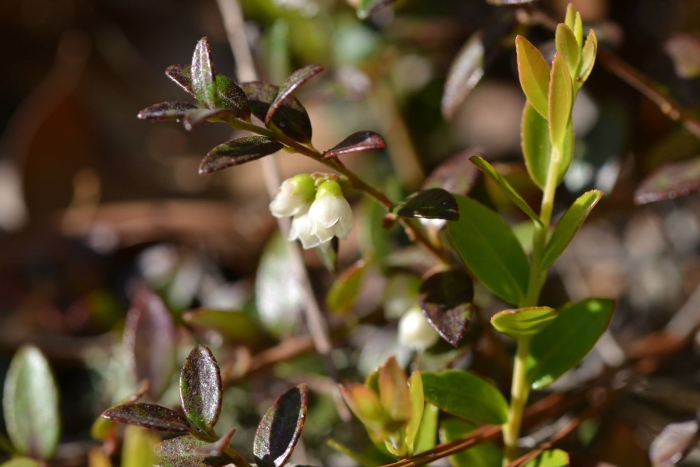Creeping Blueberry
(Vaccinium crassifolium)
Creeping Blueberry (Vaccinium crassifolium)
/
/

Tim Hammer
CC BY 4.0
Image By:
Tim Hammer
Recorded By:
Copyright:
CC BY 4.0
Copyright Notice:
Photo by: Tim Hammer | License Type: CC BY 4.0 | License URL: http://creativecommons.org/licenses/by/4.0/ | Rights Holder: Tim Hammer | Publisher: iNaturalist | Date Created: 41411 |

























Estimated Native Range
Summary
Vaccinium crassifolium, commonly known as Creeping Blueberry, is an evergreen shrub native to the coastal plain regions of the southeastern United States, specifically Virginia, North Carolina, South Carolina, and Georgia. It is typically found in acidic, sandy soils of pine barrens, open woodlands, and occasionally in disturbed areas such as roadsides. This low-growing plant reaches only 6 inches (15 cm) in height but can spread up to 3 feet (1 meter) wide, forming a dense mat of foliage.
Creeping Blueberry is valued for its ornamental features, including its shiny, dark green to bronze leaves which take on a reddish tint in the winter. It produces small, white to pink, bell-shaped flowers in the spring, followed by edible blue-black berries in the summer. The berries are not only attractive but also provide food for wildlife. This plant is used in gardens for ground cover, in rockeries, and for erosion control due to its spreading habit. It prefers partial shade to full sun, acidic soil, and requires good drainage to thrive. While it is drought-tolerant once established, it benefits from occasional watering during prolonged dry spells. Creeping Blueberry is relatively low-maintenance and is not known to suffer from serious pest or disease problems. However, it may be susceptible to root rot in poorly drained soils.CC BY-SA 4.0
Creeping Blueberry is valued for its ornamental features, including its shiny, dark green to bronze leaves which take on a reddish tint in the winter. It produces small, white to pink, bell-shaped flowers in the spring, followed by edible blue-black berries in the summer. The berries are not only attractive but also provide food for wildlife. This plant is used in gardens for ground cover, in rockeries, and for erosion control due to its spreading habit. It prefers partial shade to full sun, acidic soil, and requires good drainage to thrive. While it is drought-tolerant once established, it benefits from occasional watering during prolonged dry spells. Creeping Blueberry is relatively low-maintenance and is not known to suffer from serious pest or disease problems. However, it may be susceptible to root rot in poorly drained soils.CC BY-SA 4.0
Plant Description
- Plant Type: Shrub
- Height: 0.75-1.6 feet
- Width: 2-3 feet
- Growth Rate: Slow, Moderate
- Flower Color: Pink, White
- Flowering Season: Spring, Summer
- Leaf Retention: Evergreen
Growth Requirements
- Sun: Full Sun, Part Shade
- Water: Medium
- Drainage: Medium
Common Uses
Drought Tolerant, Edible*Disclaimer: Easyscape's listed plant edibility is for informational use. Always verify the safety and proper identification of any plant before consumption., Groundcover, Low Maintenance, Rock Garden
Natural Habitat
Native to coastal plain regions, pine barrens, and open woodlands of the southeastern United States
Other Names
Common Names: Sandhill Blueberry, Dwarf Blueberry
Scientific Names: , Vaccinium crassifolium, Herpothamnus crassifolium, Metagonia myrtifolia, Vaccinium carnosum, Vaccinium crassifolium subsp. crassifolium, Vaccinium crassifolium subsp. sempervirens, Vaccinium myrtifolium, Vaccinium sempervirens,
GBIF Accepted Name: